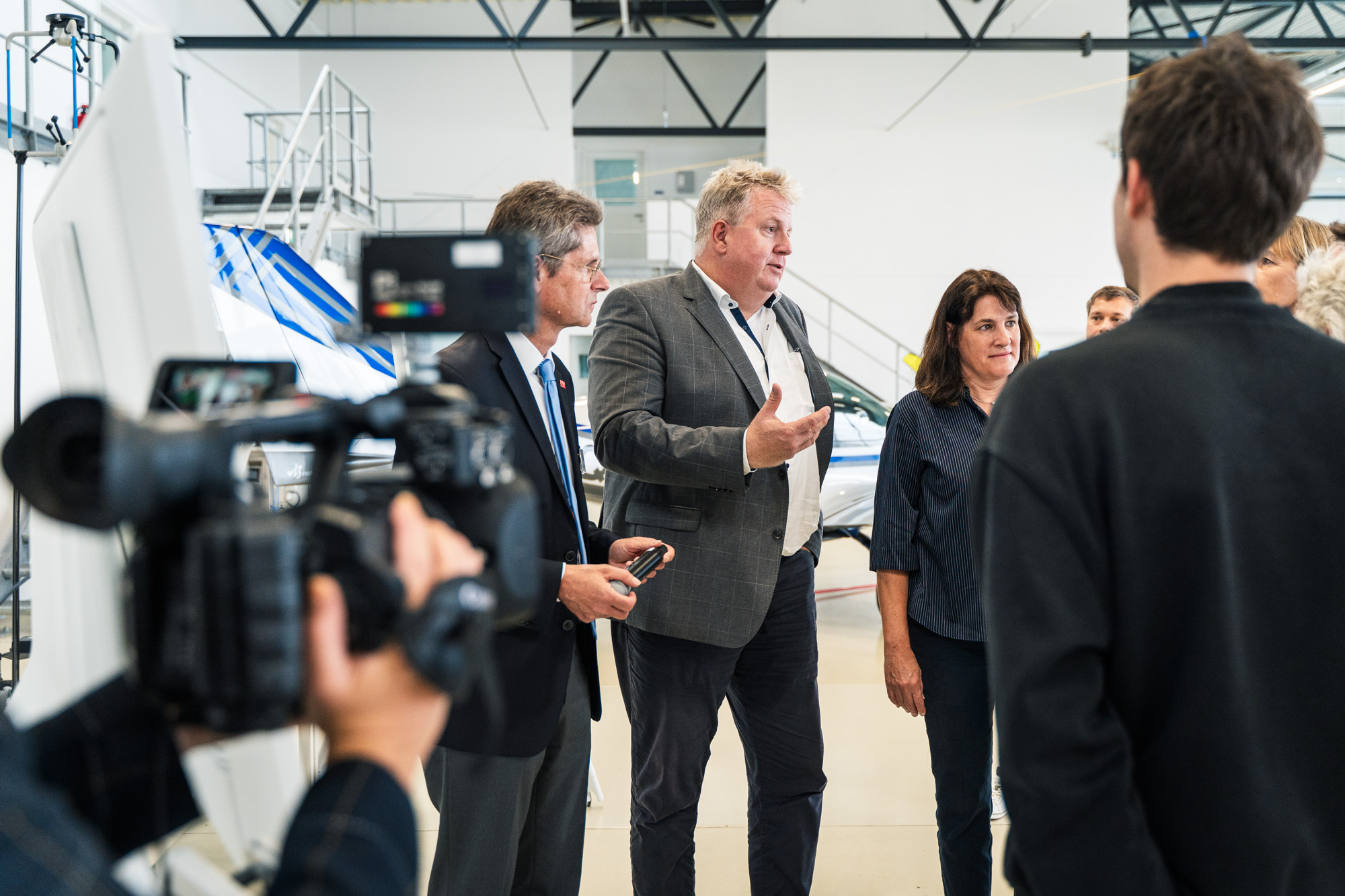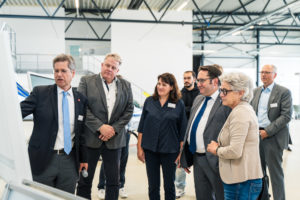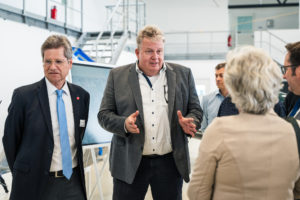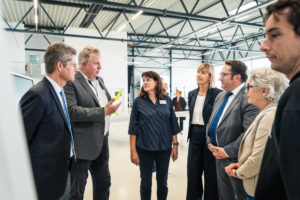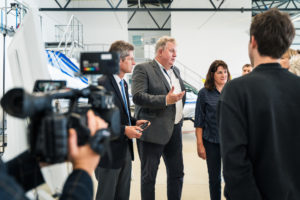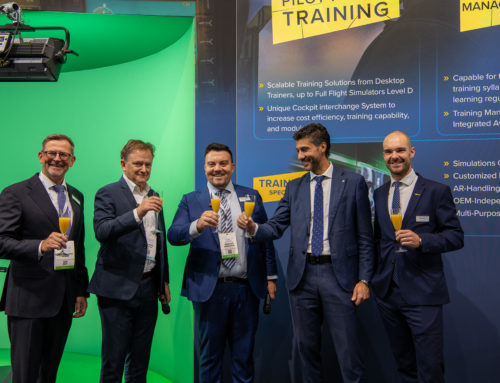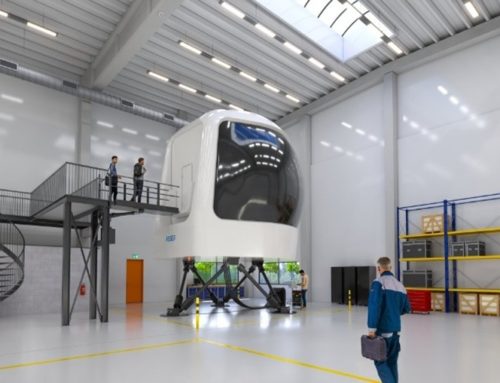Berg, Bavaria, 07 August 2025 – At the Aerospace Flight Test Center (AFTC) in Oberpfaffenhofen, innovation is more than a concept – it’s daily practice. In a unique environment where universities, industry partners and students collaborate directly, groundbreaking solutions for real-world challenges are taking shape.
One such initiative is EILT – a joint research and technology project between Munich University of Applied Sciences and Reiser Simulation and Training GmbH. The aim: to support pilots in critical landing environments – such as hospital rooftops or offshore platforms – by calculating and visualizing airflow conditions in real time. This technology has the potential to enhance safety in emergency and special operations.
As part of a site visit on August 1, 2025, representatives presented EILT to Tobias Gotthard, State Secretary of the Bavarian Ministry of Economic Affairs. The pitch was part of a guided tour through the AFTC, which – according to the Technical University of Munich – is one of the few academic research facilities worldwide with direct access to an operational airfield.
The newspaper Süddeutsche Zeitung covered the event in detail, highlighting the exceptional collaboration between research, education, and industry at the site. In addition to EILT, the article also features the autonomous firefighting helicopter system “AIDER,” designed for use in dangerous terrain.
>> Read the full article in Süddeutsche Zeitung (German)
With a dedication for safety, this project between the European companies will further strengthen the simulation and training solutions for operators worldwide. Both simulators will be certified to EASA and FAA Level D, along with other major Aviation authorities such as UK CAA, TC, and GACA.
About Reiser Simulation and Training GmbH
Reiser develops high-fidelity simulation solutions for the aviation industry. With projects like EILT, we actively foster the transfer of knowledge between academic research and industrial application. The Oberpfaffenhofen site offers ideal conditions – with direct access to test infrastructure and strong integration of education, research and real-world practice.

